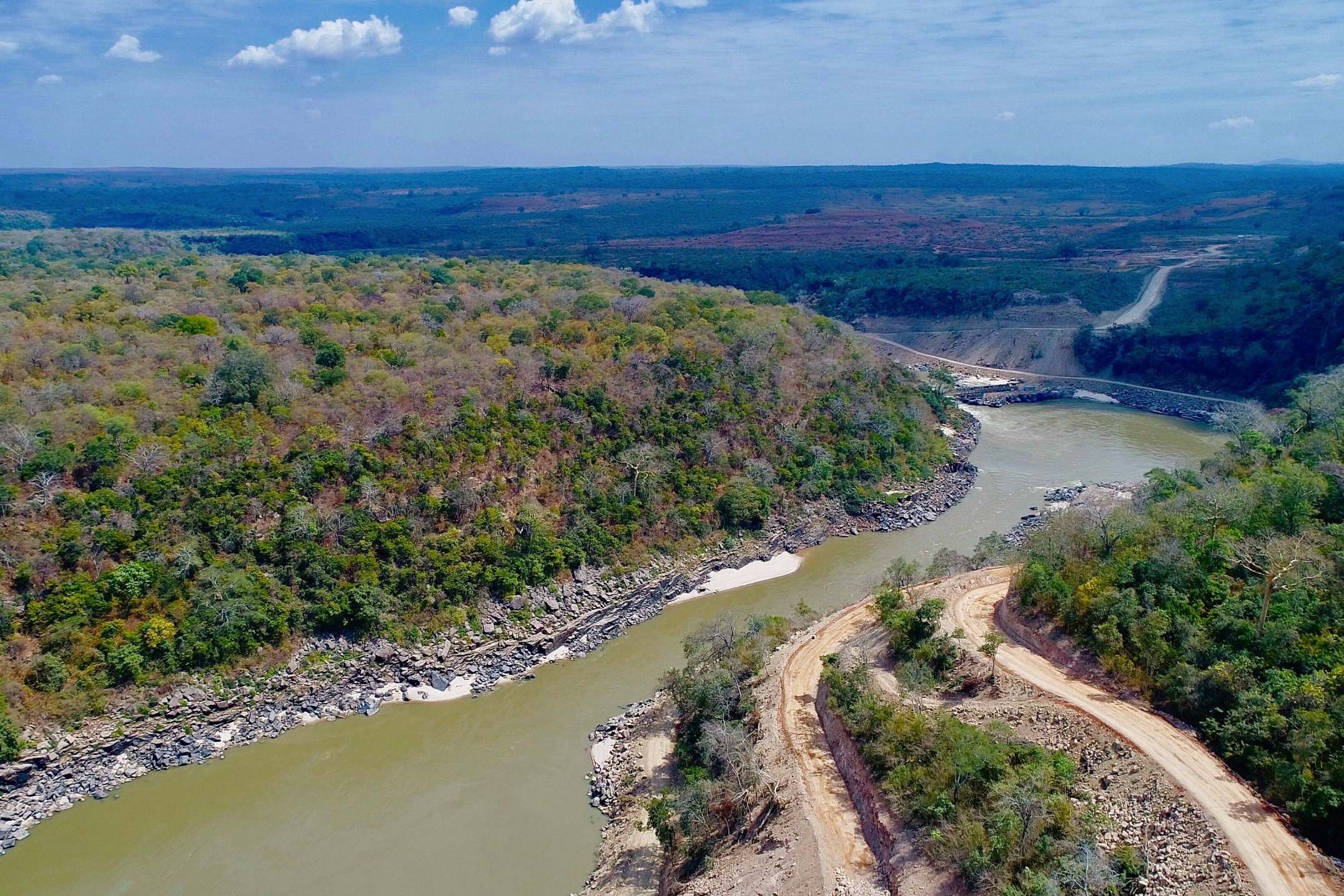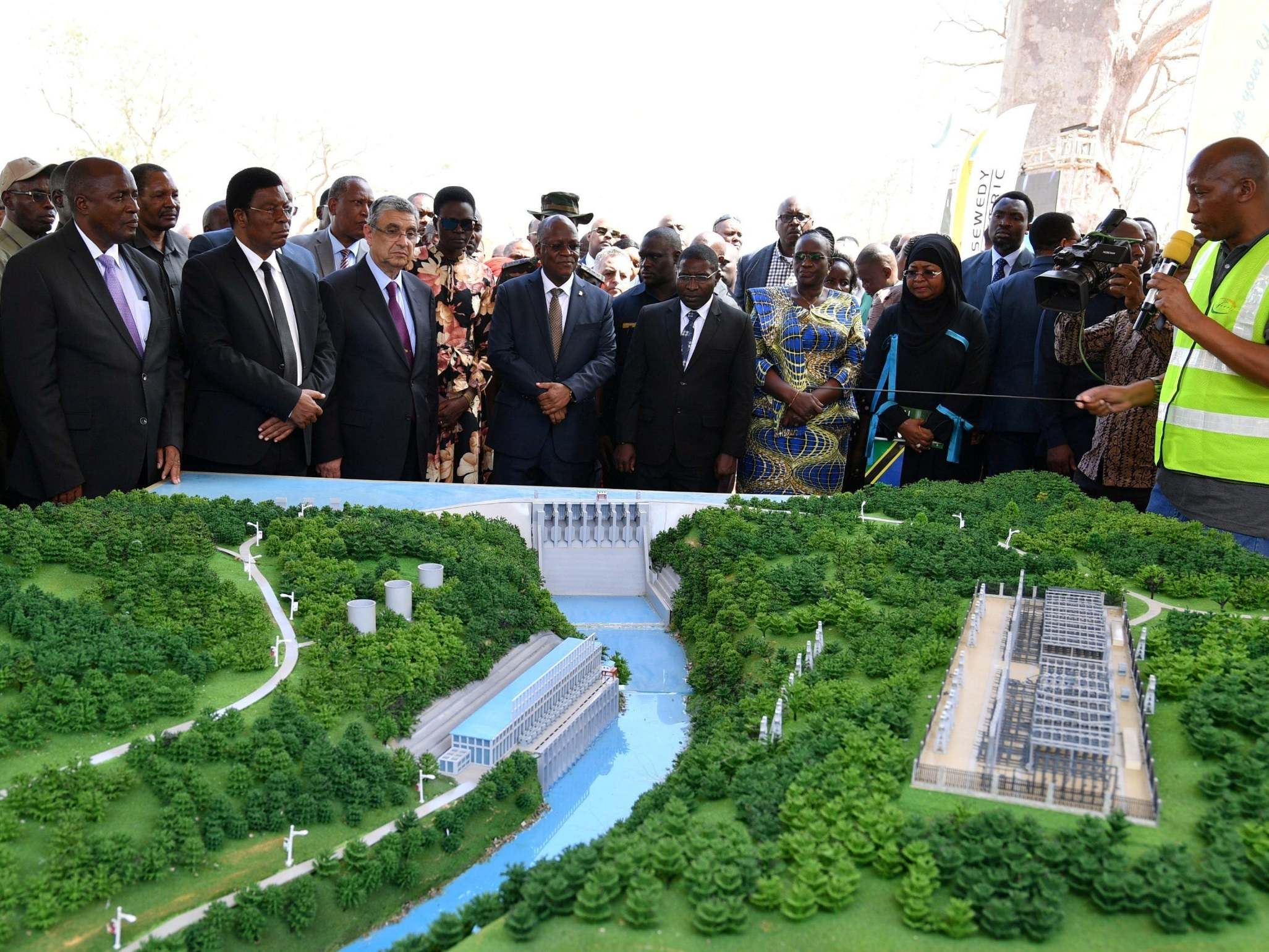Tanzania inaugurates giant dam in wildlife reserve that will ‘boost electricity supplies but threaten rhino and elephants’
‘Beginning today, this will indicate that Tanzania is an independent country... and not a poor country’

Your support helps us to tell the story
From reproductive rights to climate change to Big Tech, The Independent is on the ground when the story is developing. Whether it's investigating the financials of Elon Musk's pro-Trump PAC or producing our latest documentary, 'The A Word', which shines a light on the American women fighting for reproductive rights, we know how important it is to parse out the facts from the messaging.
At such a critical moment in US history, we need reporters on the ground. Your donation allows us to keep sending journalists to speak to both sides of the story.
The Independent is trusted by Americans across the entire political spectrum. And unlike many other quality news outlets, we choose not to lock Americans out of our reporting and analysis with paywalls. We believe quality journalism should be available to everyone, paid for by those who can afford it.
Your support makes all the difference.The president of Tanzania has inaugurated a huge controversial hydroelectric dam project in a wildlife reserve at the centre of warnings over rhino and elephant populations.
Conservation groups have opposed the Stiegler’s Gorge project in the Selous Game Reserve, the country’s largest wildlife area, which Unesco says has one of the most significant concentrations of elephants and black rhinos.
President John Magufuli called the project “the start of economic liberation”, saying the reserve – which is also a haven for cheetahs and giraffes – has been considered a potential energy source for decades.
Only one in 10 households in in the East African nation has access to the national grid and electricity prices are high.
“Beginning today, this will indicate that Tanzania is an independent country... and not a poor country,” Mr Magufuli said.
The scheme, expected to take three years to finish, will mean chopping down 2.6 million trees to flood an area covering about 1,200sq km, including the habitats of the site’s last remaining black rhinos.
The dam would be 130 metres high and stretch 700 meters across the Stiegler Canyon at the Rufiji River, in a Unesco World Heritage Site that is one of Africa’s largest protected areas and relatively undisturbed by humans.
The president said he hoped the project would boost industrial development.
“It’s time to benefit from our national resources,” he said.
Opponents of the project say it could also threaten the livelihoods of tens of thousands of people downstream, who depend on the river for agriculture and fisheries.
Last month the IUCN, together with Unesco’s World Heritage Centre, called for an immediate halt to logging and other preparations, warning of “irreversible damage” if it went ahead.
An independent review commissioned by IUCN highlighted the “inadequacy” of the environmental impact assessment.
“It would cut the heart out of the Selous reserve, with catastrophic impacts on the site’s wildlife and habitats,” said Peter Shadie, of the IUCN’s World Heritage Programme.

After the inauguration, the Worldwide Fund for Nature said the game reserve was of “extraordinary importance” and urged Tanzania’s government to consider “less harmful energy alternatives”.
But earlier this month, Mr Magufuli downplayed fears for the environment, saying that by providing energy, the dam would deter locals from felling trees for fuel.
“I want to reassure everyone this project in fact aims to promote the environment,” Magufuli said, Business Day reported.
“Also, it’s just a small part of the reserve – just 3 per cent of the total area.”
The president said the dam would not only meet national electricity needs but would also provide power to export.
The International Monetary Fund predicts the economy of Tanzania, will grow by 4 per cent this year, down from 6.6 per cent last year.
The Elephant Protection Initiative said the fact that a leading wildlife country was “prepared to contemplate drowning their natural crown jewels in pursuit of megawatts must serve as a serious wake-up call to everyone in conservation”.
“We need to make the case urgently that wildlife conservation can not only pay for itself, but that it is often the best way for the human populations who live around it to realise their legitimate aspirations for development and prosperity.
“Destroying habitat may present the illusion of short-term economic gain, but in the long run is counterproductive, not just for wildlife of course, but also people and economies.”
Additional reporting by the Associated Press
Join our commenting forum
Join thought-provoking conversations, follow other Independent readers and see their replies
Comments